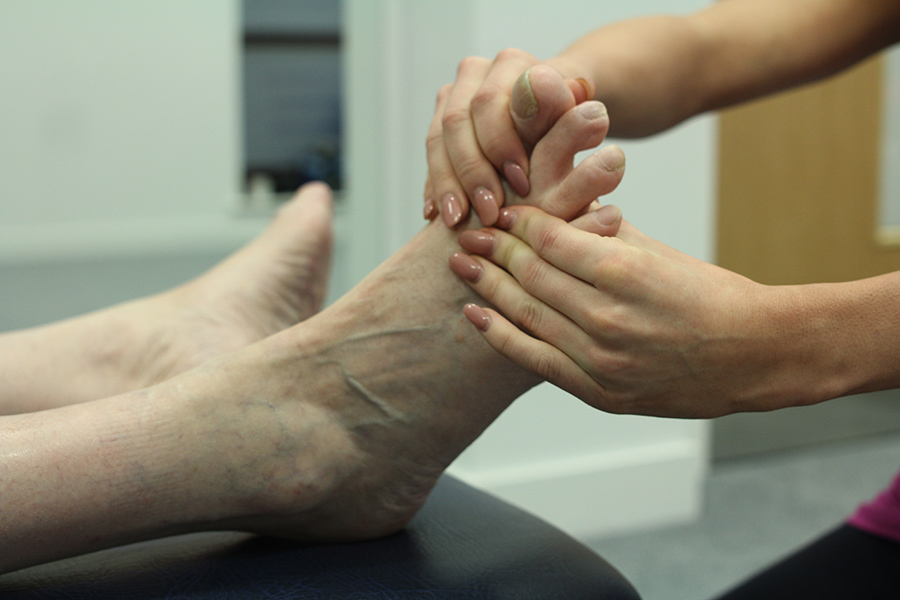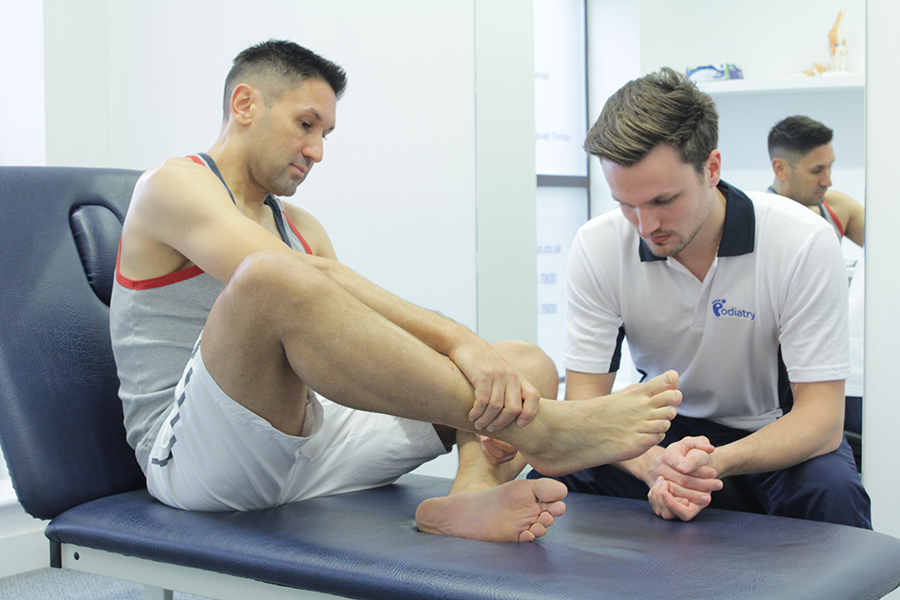Flexor hallucis longus tendinopathy
Flexor hallucis tendinopathy is an uncommon cause of ankle pain that is most often seen in ballet dancers, however, the condition can affect anyone if too much strain is placed on the tendon. The flexor hallucis longus tendon may be placed under excessive stress through, for example, activities that require repetitive push off movements at the big toe, or through poor foot function such as over-pronation.
What is flexor hallucis tendinopathy?
Flexor hallucis tendinopathy presents as pain just behind the medial
malleolus, this is the bony lump on the inside of the ankle. The pain
associated with flexor hallucis tendinopathy typically begins behind the
medial malleolus and radiates towards the big toe.
The flexor hallucis tendon comes from the flexor hallucis muscle. The
flexor hallucis muscle is situated at the back of the fibula (this is the
smaller of the two leg bones and is positioned on the outside of the leg).
Flexor hallucis longus then courses down the leg and its tendon inserts
into the base of the big toe. The function of flexor hallucis longus is
flexion of the big toe (this is bending the toe so that it is pointing
downwards) as well as plantarflexion of the foot (this is the position the
foot is in when the toes are pointing towards the ground). Flexor hallucis
longus also has a role in maintaining the arch of the foot.
Overuse can damage the tendon and this produces pain. Flexor hallucis
tendinopathy is common amongst dancers and athletes who use lots of 'push
off' movements at the big toe.

What causes flexor halluces tendinopathy?
Flexor hallucis tendinopathy results from overuse of the flexor hallucis
muscle and tendon. When the flexor hallucis muscle contracts it puts stress
on the tendon and over-time this can become irritated and damaged, leading
to inflammation and tears.
Other causes of flexor hallucis tendinopathy include:
- Over-pronation: an over-pronated foot can put extra strain on the tendon
- Ballet dancing: the point position adopted in ballet dancing forces the flexor hallucis longus tendon to act as a stabilizer, increasing the stress on the tendon
- Muscle weakness
- Lack of flexibility
What are the signs and symptoms of flexor halluces tendionopathy?
The signs and symptoms of flexor hallucis tendinopathy may include:
- Pain approximately 2cm behind the medial malleolus (this is the bony lump on the inside of the ankle). The pain associated with flexor hallucis longus tendinopathy typically comes on gradually and gets worse over time, at first the pain is felt after activity that puts strain on the tendon (e.g. ballet), but later the pain is experienced during activity as well.
- Pain that radiates to the big toe
- Pain that is worse when the toes are flexed (positioned so that they are pointing down)
- Stiffness at the big toe joint
- Redness and swelling may be present at sites where the tendon courses
- Palpation of the tendon may reveal thickening
How is flexor halluces tendinopathy diagnosed?
Flexor hallucis tendinopathy is diagnosed based on a thorough assessment, the signs and symptoms, and an examination.
Benefits of podiatry for flexor halluces tendinopathy
The podiatric benefits that can be expected following assessment and treatment include:
- Decrease in pain
- Decrease in inflammation
- Decrease in muscle tightness
- Increase in muscle strength
- Improved in gait
- Improved foot and lower limb mechanics

What would podiatry for flexor halluces tendinopathy involve?
Podiatry for flexor hallucis tendinopathy would involve an initial
assessment. During the assessment we will obtain a medical and social
history, as well as an account of the problem itself. The history will be
used alongside any signs and symptoms, which along with an examination of
the foot and ankle will inform the podiatrist as to the diagnosis.
Upon the diagnosis of flexor hallucis tendinopathy your podiatrist will
explain their findings; they will then devise a treatment plan specific to
you. Treatment for flexor hallucis tendinopathy may include:
- R.I.C.E: rest, ice, compression, elevation
- Orthoses
- Strengthening Exercises
- Stretching Programmes
- Ultrasound
- Advice and education
- Footwear review
- Activity modification
Summary
Flexor hallucis tendinopathy is a fairly uncommon condition that presents
as pain at the ankle and that can radiate to the big toe, the condition is
most often found in ballet dancers due to their adoption of the point
position, which places too much strain on the tendon. Flexor hallucis
tendinopathy can affect anyone if they have poor foot posture or
participate in activities that require repetitive flexion of the foot,
ankle, and big toe, as this can also increase the stress being placed on
the flexor hallucis longus tendon.
If you think you may have flexor hallucis tendinopathy, then come visit one
of our podiatrists at Chiropody.co.uk. Our podiatrists are highly trained
in the diagnosis and treatment of a variety of conditions associated with
the foot and ankle; they will devise a treatment plan that will aim to
reduce any pain associated with your condition, as well as to improve the
function of your foot and ankle
To arrange an assessment with one our podiatrists please email office@chiropody.co.uk or call 0330 088 4222.
Save 5% by booking an appointment online.



We work with:

Individuals

Organisations

Health professionals
Get in Touch!
0330 088 4222
If you would like to speak to one of our specialists then please complete this form.
We are open 7 days a week








